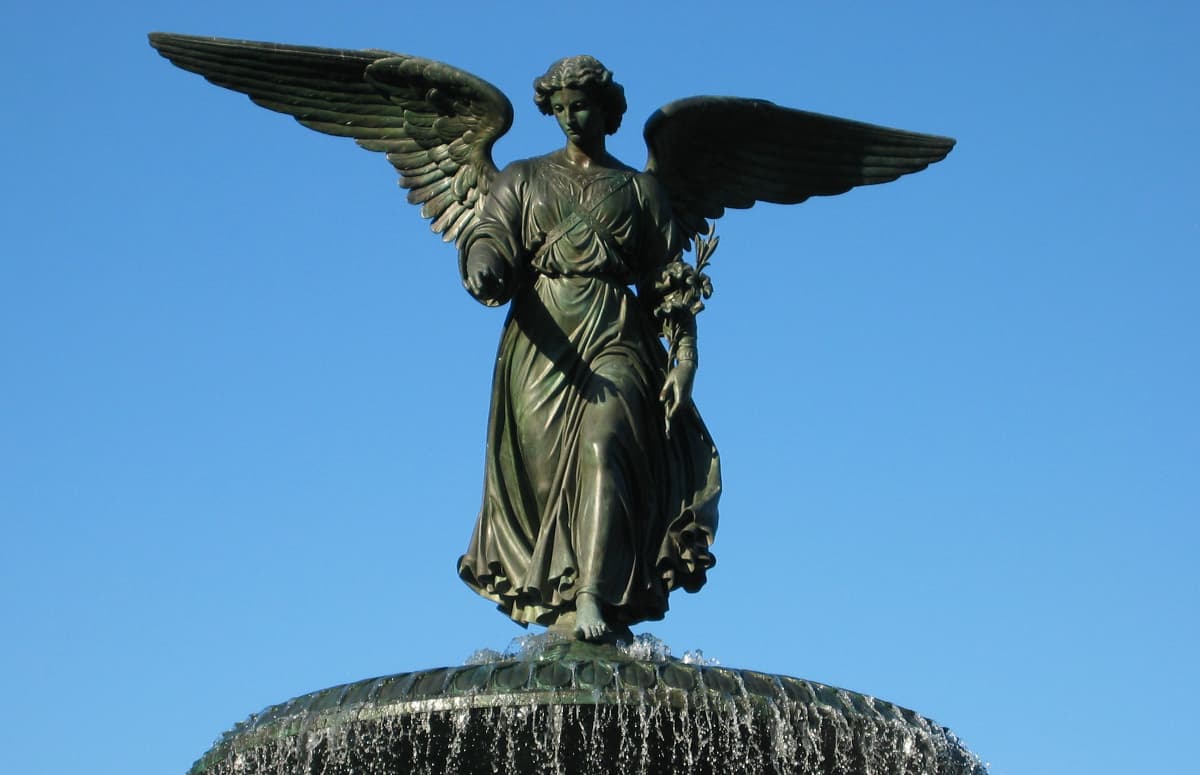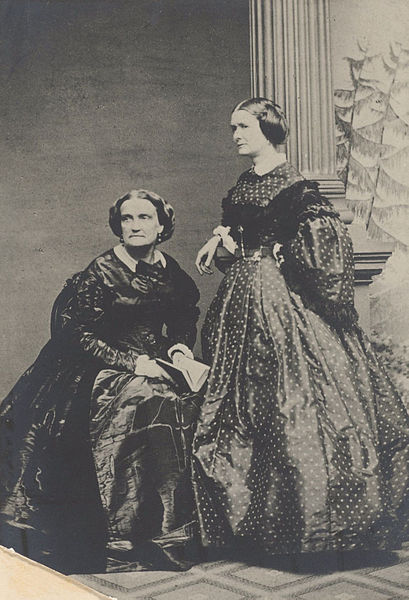Meet the Towering, Classical Artist Who Created the Gender-Bending Angel of Central Park
Emma Stebbins’s story is told in a new book that starts to do justice to a masterful sculptor.

‘Emma and the Angel of Central Park. The Story of a New York Icon and the Woman Who Created It.’
Bordighera Press, 238 pages
Who designed the fountain on the Bethesda Terrace, overlooking the lake, at the heart of Central Park? And who made the magnificent statue of the angel which hovers over the fountain blessing the waters? Amazingly, it was an American woman, Emma Stebbins, who conceived and executed this masterpiece — while living in Rome.
The story of her life is the subject of a forthcoming book by Maria Teresa Cometto, “Emma and the Angel of Central Park.” Stebbins has become a hero of the LGBTQ community for this work, and for her life-long attachment and love for another woman. The book relates an affecting story of the relations among a group of American women artists in Rome in a male-dominated profession.
Henry James referred ungenerously to the group as “the white marmorean flock.” Mostly Ms. Cometto’s extensive research discloses the story of a gifted artist’s successful struggle to realize her genius. As with the works of Artemisia Gentileschi, one doesn’t think of Stebbins’s mature works as art made by a woman, but only of great art.
Born in 1815 into the family of a wealthy banker, Stebbins was encouraged to pursue her interest in the arts. She took to sculpture and by 1842 was an associate member of the National Academy of Design. The New York of the day is vividly portrayed by Ms. Cometto as “dirty, unhealthy, violent, corrupt” and prone to cholera epidemics, riots, fires, and political corruption.
In other words, no place to advance her study of sculpture. So with the financial support of her brother Henry, Stebbins arrived in 1856 at Rome, which in those days was still the capital of the art world and the place to pursue a career in sculpture. Artists have long studied the art of classical antiquity in Rome and been inspired by the sculpture and painting in the palaces and churches.
The best American sculptors had studios there to take advantage of the skilled labor of Italian craftsmen and stone carvers. In 1858 Stebbins met Harriet Hosmer, an American already established as a sculptor commanding a studio with many assistants — perhaps the first woman to achieve such a feat. Hosmer introduced her to a society of artists and expatriots.
The circle included the American actress Charlotte Cushing, famous, well-connected, and known for the dramatic portrayal of both female and male roles. Charlotte took on promoting the talent of Stebbins. Affection grew between them and within a year they were as if married.

Soon Stebbins had her own studio, but unlike Hosmer, she did not rely on teams of Italian craftsmen, but preferred to do all the work herself. By 1857 Stebbins’s brother had become an important member of the public commission building Central Park after the design of Frederick Law Olmsted and Calvert Vaux.
The plan called for a fountain at the terrace beside the lake celebrating the delivery of pure water to the city by the Croton Aqueduct. Ms. Cometto makes the case that the idea of an angel originated with Stebbins herself. Stebbins’s dedication refers to the biblical story of the angel and the spring at Bethesda:
“An angel descending to bless the water for healing, seems not inappropriate in connection with the fountain … we have no less healing comfort and purification, freely sent to us through the blessed gift of pure and wholesome water, which to all the countless homes of this great city, comes like an angel visitant, not at stated seasons only, but day by day.”
Stebbins herself describes the angel as bearing lilies in her left hand, signifying purity, “wearing across her breast the crossed bands of the messenger-angel, and seeming to hover, as if just alighting on a mass of rock, from which the water gushes,” falling over the edge of the upper basin slightly veiling the four cherubs between the upper and lower basins. Donatello couldn’t have pulled it off better.
The angel’s wings are still spread from recent flight, and her right hand reaches forward in an act of blessing. There is a twist in the torso caused by the lifting of the left leg in a step, and reaching forward with the blessing hand, the neck rising to the right and the head tilting to our left. The effect is she is constantly in motion. The angel is eight heads tall, slightly taller than the average human.
Finally, much has been speculated about the gender of angels, and what is known about the issue of gender in heaven. Stebbins’s imagination and skill have created a vision of a superhuman being with attributes of a woman of heroic proportions, energy, and grace — that’s something only a towering artist could do.
_______
Ms. Cometto’s book will be the subject of a panel discussion marking the 150th anniversary of ‘Angel of the Waters’ at the Italian Cultural Institute at New York City at 6 P.M. on May 31.

